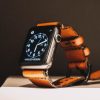What You Should Know About Nondestructive Testing
Nondestructive testing, or NDT, involves the analysis of materials and components without damaging them or otherwise rendering them unusable. Manufacturing, medicine and art are three industries which use nondestructive testing. This type of testing is used for dozens of reasons, including the detection of leaks, cracks and many other issues with sample integrity.
Why Nondestructive Testing is Used
Since nondestructive testing does not ruin the component being tested, it can be used in instances where 100% inspection for defects such as leaks or cracks is crucial. This is especially critical in the aerospace and petroleum industries where these types of defects can cause serious safety issues. In the art industry, nondestructive testing is used to determine authenticity, to uncover other paintings hidden underneath a surface painting, to determine the age of an artifact and many other uses.
Types of Nondestructive Tests
There are several types of nondestructive tests. The tests that are most frequently used include visual, radiographic (such as X-rays), ultrasonic, magnetic particle, penetrant, leak and electromagnetic testing. Almost everyone has had an X-ray or an ultrasound test as part of a medical examination, but these tests are also used in other industries.
Visual Testing
Visual inspection is the simplest type of nondestructive testing. Using the naked eye, magnification and / or cameras to detect flaws on a surface, or to compare surfaces against a known standard are common ways that visual testing is carried out.
Radiographic Testing
Radiographic testing using either X-ray or gamma-ray radiation to determine the presence of defects in welds, concrete, piping and other structural or component parts. This type of testing is widely used in the transportation industry for scanning cargo containers as well as passengers.
Ultrasonic Testing
Ultrasonic testing is the non-hazardous (hence its use in medicine) examination of components and materials. Its high penetration and sensitivity make it ideal for detecting flaws, even very small flaws, located deep within thick-walled structures or components. In medicine, it is used for obstetrics and other disciplines to see internal areas of the human body where X-rays or other methods are either not warranted or are possibly harmful. Light and dark areas on the detector indicate the varying densities of the component being tested.
Magnetic Particle Testing
Magnetic particle testing is used on ferrous materials to detect flaws at or near the surface of a component. Tiny iron particles (either dry or wet) are dusted onto a component after a magnetic field has been induced. Defects located at or near the surface of the component (such as cracks, gouges or scratches) will allow the particles to congregate, providing an easily visible image of the flaw.
Penetrant Testing
Penetrant testing also provides easily seen defects. Depending on the type of dye used, flaws will either be visible by color contrast or by fluorescence. A sample is coated with either visible or fluorescent dye; after the excess is removed, a developer is added. Using a visible dye will produce a color contrast showing the defect; using ultraviolet light with the fluorescent dye will produce a glow showing the defect.
Leak Testing
Leak testing can be performed in several ways, but one of the most common ways is a bubble test. If a sample is defective, bubbles will appear when the sample is either sprayed with a soap and water solution and a negative pressure is then created.
Electromagnetic Testing
Like leak testing, electromagnetic testing can be done in several ways. One of the most well-known is eddy current testing, which involves generating electrical currents through a conductive sample. Measuring these currents will reveal any interruptions in their flow, indicating the presence of a defect. Regardless of industry, nondestructive testing is of critical importance when ensuring that safety, reliability, and authenticity are integral to the process.

















